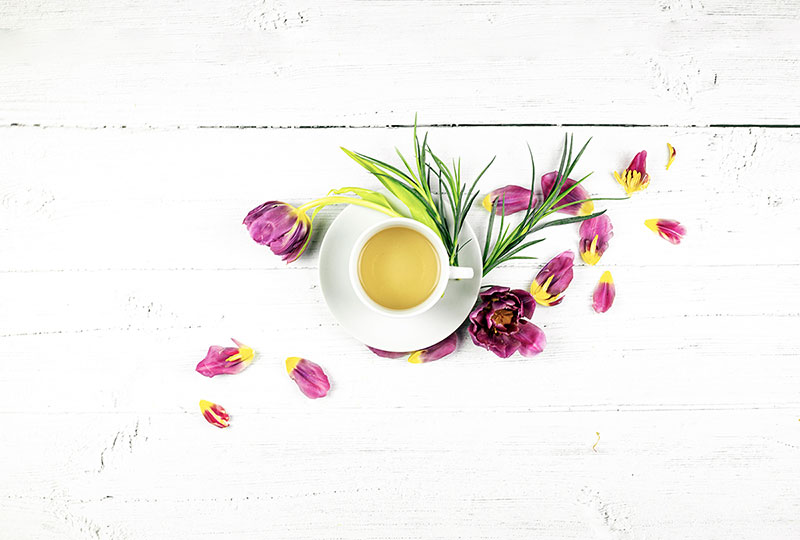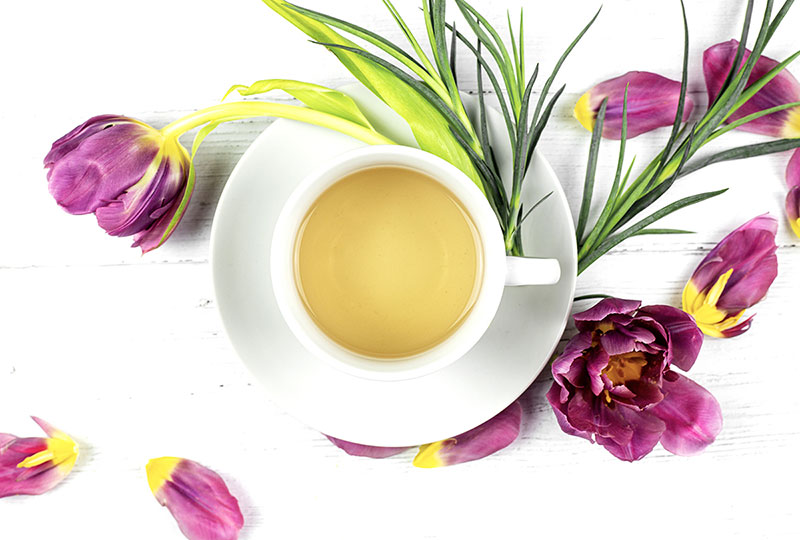High Mountain Tea Guide
If you are ever offered a cup of high mountain tea, never say no. For a tea lover, trying a high mountain tea for the first time is an unforgettable experience. High mountain teas have a highly complex aroma and flavor, beautifully shaped leaves, and are perfect for slow sipping.
What is high mountain tea?
Any tea gown on high altitudes can be a high mountain tea, but in tea world, term “high mountain tea” usually implies Taiwanese teas. High mountain tea is Taiwanese oolong tea grown on altitudes above 1000 meters. High mountain oolong or gao shan oolong is usually light, less oxidized tea, closer to green tea both with color and flavor. It’s shaped in small balls, similar to Chinese Ti Kwan Yin oolong. However, there’s one big difference. Ti Kwan Yin oolong will contain only tea leaves, and high mountain oolong is usually have whole branches with attached leaves. The best teas usually come from spring and winter harvests, but summer and autumn harvest are available too.
Tea Origins
High mountain oolong tea is tea growing on high altitudes in central Taiwanese mountain ranges. Sometimes these tea gardens are at 2000 meters above sea level in locations that are not easily accessible. The most famous ones are Alishan, Lishan, Yushan Shan Lin Xi, Qilai Shan, Da Yu Ling oolong teas. Da Yu Ling is one of the most famous high mountain teas, and it’s grown in only several places.
These teas are not only special because of their growing conditions. They come from tea cultivars that are specific to Taiwan. The most popular tea cultivars for making high mountain teas are qing xin, Jin Xuan, cui yu and Si-ji cultivars. If you are a tea beginner, you may need to experiment and taste different types of tea to develop a sense for different cultivars. But what makes Taiwanese gao shan teas really special is that each of them is so unique that it makes a very good starting point in understanding tea cultivars in general.
Learn more about Taiwanese teas here.
Tea Taste
High mountain oolongs are very aromatic and famous for its strong floral notes. The taste of tea is not only defined by the place and environment where it’s grown, harvesting and processing methods and brewing techniques. Cultivars play an exceptionally important role too. Have you ever heard of a famous milky oolong? The real milky oolong is, in fact, a high mountain tea made from jin xuan cultivar. What makes it so special is a creamy texture, and a light milky note. Other popular cultivar, qin xin or “green heart” may have such a strong and fresh green middle tones that you will be able to recognize it immediately.
Benefits of Drinking High Mountain tea
High mountain oolongs, just like other oolong tea contain antioxidants, minerals and vitamins, caffeine, L-theanine, chlorophyl and other compounds. They are considered exceptionally aromatic and healthy because they come from high elevation areas with cooler climate that are still unaffected by pollution. Just like green tea, oolong tea contains EGCG, a catechin linked to many potential health benefits. Studies suggest it may help with weight loss goals, may provide anticancer activity and reduce the risk of cardiovascular diseases and Type 2 diabetes. Find out what are 15 unique oolong tea benefits here.
Caffeine Content
All teas made from camellia sinensis plant contain caffeine. Although it’s impossible to say how much caffeine will a cup of your tea contain, you can expect around 40-60 mg of caffeine per cup. The total caffeine content depends not only on the tea plant, growing, harvesting and processing methods, but on how you brew it too. If you use more tea leaves, steep them longer and use hotter water, your cup will contain more caffeine. High mountain oolong teas contain entire branches with buds and larger leaves, they are less oxidized and tightly rolled, which will all impact the caffeine content. Darker Taiwanese oolongs such as White tipped oolong are likely to have more caffeine.
How to Brew
Taiwanese high mountain oolong is best brewed in special Taiwanese teapots or gaiwans. The proper way to make it is by using at least 4-5 grams of loose leaf tea per even 100-150 ml of water and re-steep it until leaves are completely open. You can steep the same leaves multiple times, and enjoy at least 5-10 great infusions.
Gao shan oolongs are usually steeped in very hot, nearly boiling water, at around 194-203°F. The first infusion should be only a few seconds long, used to rinse the tea leaves and discarded. Keep the second infusion around 20-30 seconds and increase the time for every subsequent infusion. Each and every infusion will have a special taste, with complex flavor notes. This tea is typically served in very small cups and enjoyed immediately, without sugar, honey or milk.
Alternatively, you can prepare high mountain oolongs using the typical western-brewing technique. Use about 2-3 grams of tea leaves per cup of water and steep for 3-5 minutes, depending on the tea. Interestingly, there are some high mountain teas that taste better when steeped for over 5 minutes. High mountain oolongs are rarely available in tea bags.
Learn how to brew oolong tea properly here.
Where to Buy
High mountain tea is available from many shops specializing in High mountain tea. There are many types available. Some of these teas, such as Da Yu Ling, can have a very high price tag. Many teas will indicate even the specific garden, but some may be generic. However, all of them will have a unique and delicious flavor. Always buy high mountain teas from either reputable online tea shops or shops that specialize in Taiwanese teas.
Disclaimer: This article is for informational purposes only. It’s not intended to replace medical advice, diagnosis or treatment. Every person is different and may react to different herbs and teas differently. Never use teas or herbs to treat serious medical conditions on your own. Always seek professional medical advice before choosing home remedies.




